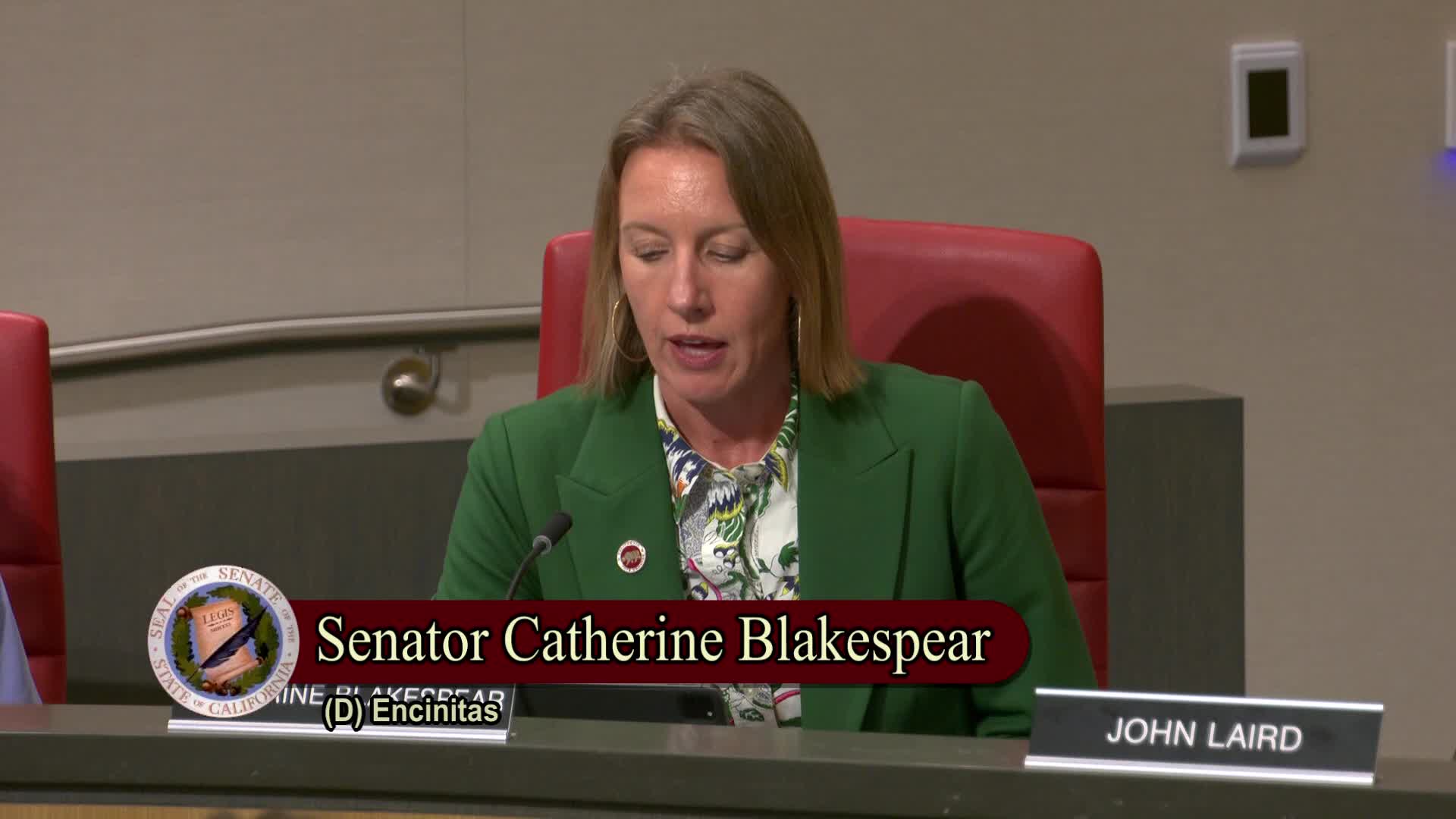California lawmaker voices concerns over CEQA exemptions impacting endangered species habitats
June 30, 2025 | California State Senate, Senate, Legislative, California
This article was created by AI summarizing key points discussed. AI makes mistakes, so for full details and context, please refer to the video of the full meeting. Please report any errors so we can fix them. Report an error »

In a recent meeting of the California State Senate's Budget and Fiscal Review Committee, significant concerns were raised regarding potential changes to the California Environmental Quality Act (CEQA) and their implications for endangered species habitats. The discussions highlighted the evolving nature of a bill that could introduce new exemptions to CEQA, which some lawmakers fear may inadvertently jeopardize critical protections for vulnerable wildlife.
One senator expressed alarm over the bill's current form, noting that it lacks specific protections for habitats essential to endangered species, such as monarch butterflies and various bear species. The senator emphasized that while the state has long prioritized the protection of these species, the proposed changes could lead to a decline in their habitats, ultimately pushing them closer to extinction. This concern aligns with California's broader environmental goals, including the "30 by 30" initiative aimed at halting the extinction crisis.
The senator called for "cleanup legislation" to ensure that definitions of natural and protected lands explicitly include habitats for threatened species. This move is seen as crucial to maintaining the integrity of California's environmental protections while allowing for necessary development.
Additionally, the committee discussed the Delta Conveyance Project, raising questions about the potential for industrial development along the Delta. The senator pointed out that if a city or county along the Delta were to rezone land for industrial use, such projects might proceed without undergoing the CEQA review process, as the Delta is not classified as natural and protected land. This aspect of the discussion underscored the complexities of balancing development needs with environmental safeguards.
The meeting concluded with a recognition of the need for further clarification and potential amendments to ensure that both development and environmental protection can coexist effectively. As California continues to navigate these critical issues, the outcomes of these discussions will likely have lasting implications for the state's ecological health and development landscape.
One senator expressed alarm over the bill's current form, noting that it lacks specific protections for habitats essential to endangered species, such as monarch butterflies and various bear species. The senator emphasized that while the state has long prioritized the protection of these species, the proposed changes could lead to a decline in their habitats, ultimately pushing them closer to extinction. This concern aligns with California's broader environmental goals, including the "30 by 30" initiative aimed at halting the extinction crisis.
The senator called for "cleanup legislation" to ensure that definitions of natural and protected lands explicitly include habitats for threatened species. This move is seen as crucial to maintaining the integrity of California's environmental protections while allowing for necessary development.
Additionally, the committee discussed the Delta Conveyance Project, raising questions about the potential for industrial development along the Delta. The senator pointed out that if a city or county along the Delta were to rezone land for industrial use, such projects might proceed without undergoing the CEQA review process, as the Delta is not classified as natural and protected land. This aspect of the discussion underscored the complexities of balancing development needs with environmental safeguards.
The meeting concluded with a recognition of the need for further clarification and potential amendments to ensure that both development and environmental protection can coexist effectively. As California continues to navigate these critical issues, the outcomes of these discussions will likely have lasting implications for the state's ecological health and development landscape.
View full meeting
This article is based on a recent meeting—watch the full video and explore the complete transcript for deeper insights into the discussion.
View full meeting
